|
West Road
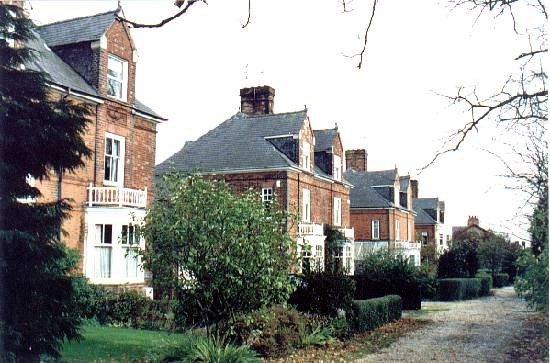
Among the grandest homes in Bourne from late Victorian times are a row of
five pairs of three-storey semi-detached town houses in West Road known as Westbourne Villas that were constructed between 1885 and 1890.
The land on which they were built was originally owned by the Marquess of Exeter but was bought by Robert Mason Mills, founder of Bourne's aerated water business, in 1885 with the intention of erecting large and grand properties as an investment and that could be occupied by leading families in the town who could afford domestic servants. He therefore instructed Mr John Charles Traylen of Traylen & Lenton of Stamford, consultant architects to the Abbey Church, to design the houses to his specifications and the final plans were drawn up for his approval. They are therefore, extremely large properties with front gables and dormer windows and there is ample accommodation for staff on the top floor and attic rooms. These houses were also sited on what we would call today green belt land because it was outside the urban area of the time and therefore a location much sought after but only within the financial reach of the more affluent members of Bourne society.
Two builders were involved in their construction, Mr Henry Hicks of the South Fletton Works, Peterborough, and Mr William Story of Bourne. Work began in 1885 when the first to be built were Numbers 36 and 38, with stylised swag patterns on the gables but the others, which were completed to order during the following five years, do not have such ornate decoration. These two
also had cellars, the only houses in Bourne with such a facility, although the others did not because the water table was too high and
they would therefore be prone to flooding.
The cost of each ranged from £800 to £1,000, according to the finishes and fittings required by the future occupants who
originally rented them for £25 a year.
The specifications vetted by Mr Mills give a remarkable insight into the building techniques available in the late 19th century, ranging from the excavations of the site to bricklaying, joinery, glazing, plumbing and drainage and giving details of every aspect of each house, from bricks and slates down to the polish to be used on the interior woodwork and even the make of doorbells. The building materials were locally produced red bricks with blue Collyweston slate roofs and although the basic design is the same throughout the row, it is apparent that each was built for a specific buyer because most of the frontages have been personalised on the instructions of the new owners with terracotta classical decorations and sunbursts that were fashionable at the time.
The front drives had wrought iron gates at each end which were generally closed until residents started to own their own cars. There was a carriage right of way round the back and several of the houses had stables for horses. The houses were not connected to the town's main water supply but tapped supplies from their own bore in the vicinity.
Ironically, although Mr Mills took such a personal interest in these properties and his name is even included on the plans, he never occupied one but preferred to live above his shop premises near the market place at No 1 West Street until he died in 1904. Ownership remained with his descendants until the tenancies
expired and the properties became vacant when they were sold off individually, mainly because of the introduction of new rental regulations which made the project less profitable than in the past, and by 1962,
all ten were all in private ownership.
As an example of how the value of these
houses has risen since they were built more than 100 years ago, one of
them was offered for sale in the summer of 2003 for £350,000.
|
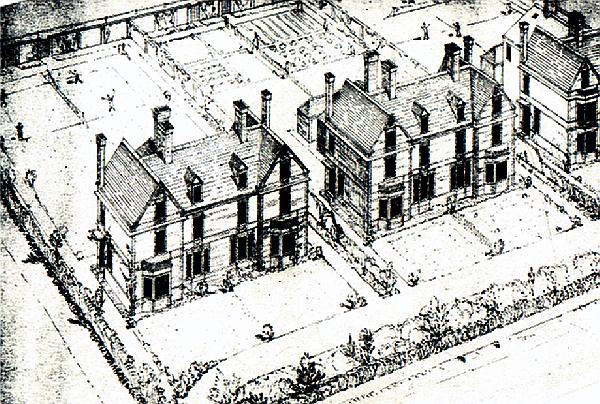
|
|
Details from the
architect's plans for Westbourne Villas, one of the most exclusive
residential property developments in Bourne during the 19th century
(above and below).
|
|
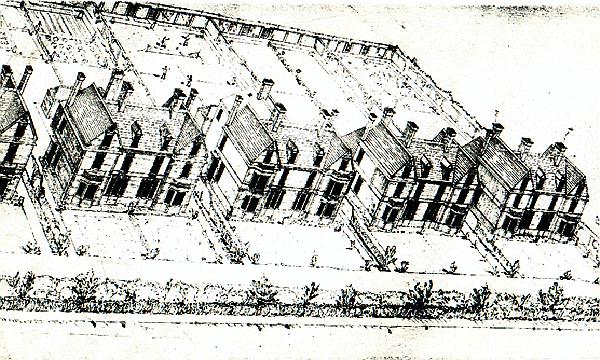
|
|
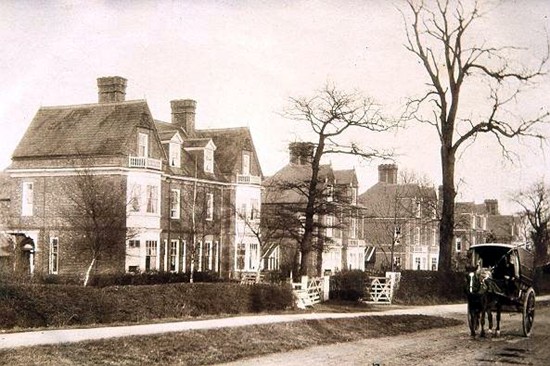 |
|
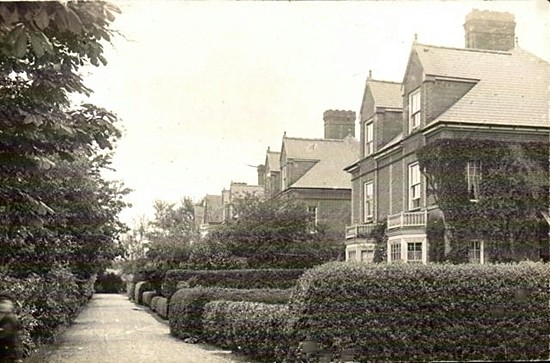 |
|
Westbourne Villas, pictured at the turn of the
century (top) with a horse-drawn
cart from Cliffe's grocery stores passing by. The bottom photograph
was taken as a picture postcard by Ashby Swift around 1910. |
REVISED NOVEMBER 2012
See
also Robert
Mason Mills

Go to:
Main Index Villages
Index
|




